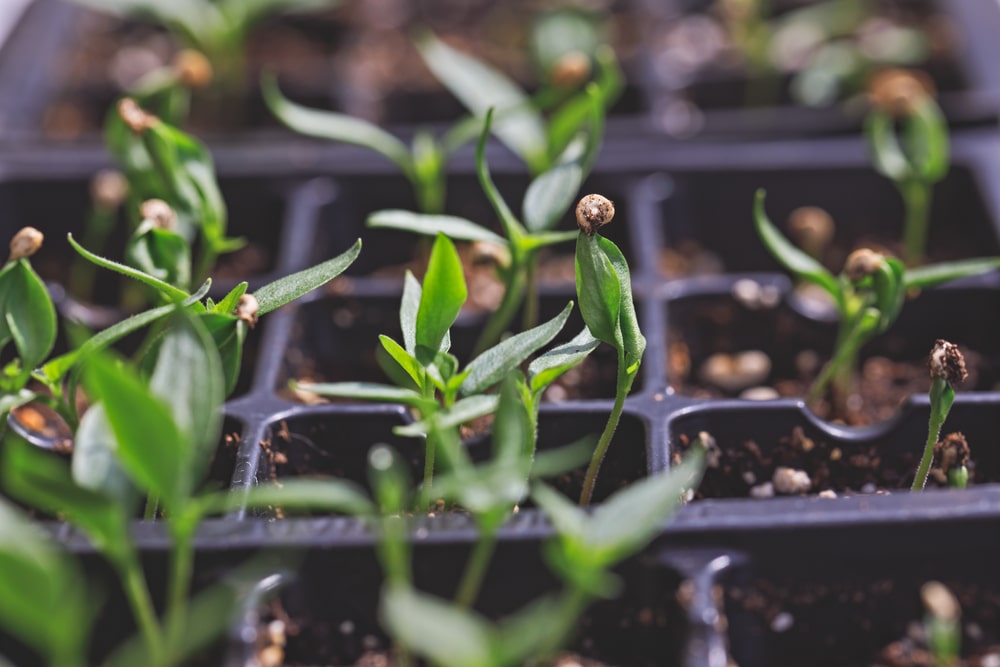Every year, about this time, I get hit with many questions from people who have started seeds indoors. Here are some of the most common questions I get asked:
“Why are my seedlings long and floppy?”
Long, weak stems resulting from inadequate light is called etiolation. There is only one fix for this condition—more light. Seed trays should always be in the brightest window you’ve got.
If you’re using just artificial lights, the recommended height for artificial light is just a few inches above the seed tray, raising the fixture as the plants grow. The lights are generally left on 16 hours a day. As always, light fixtures can vary, so follow the directions that come with yours.
“How long does it take for seeds to sprout?”
This question is best answered by consulting the back of the seed package. The package will tell you how long it takes for the seeds to germinate. Generally, peppers and eggplants take 10 to 25 days to sprout; tomatoes, around 7 to 10 days; basil and zinnias, 5 to 10 days. Green beans can sprout in as little as 3 to 5 days (so why even bother starting them indoors? I direct sow outside).
“How long does it take the fruit to develop/how long does it take to develop flowers.”
Again, the seed packet is your best source of information. Most members of the tomato family (tomatoes, peppers, eggplants) will start to bear fruit anywhere from 55 to 80 days after transplanting outside (based on starting them inside about 6 to 8 weeks before the last frost date). Bush beans, on the other hand, will begin producing only seven or eight weeks after planting.
“Why did all my seedlings fall over and die?”
This is a condition known as damping off. Damping off is a fungus that attacks new seedlings. Once you get it, there is no treatment, but you can easily prevent it by starting your seedlings in sterile seed-starting soil or little peat pellets, ensuring your trays have good air circulation. Always remove the clear plastic greenhouse lids once the seeds have come up. Ensure your trays are in adequate light; and thinning seedlings properly (again, the back of the seed packet will tell you).
Now is the Perfect Time!
We have a great selection of seeds, and now is a perfect time to get long-season veggies (like tomatoes, etc.) and perennial flowers started.

